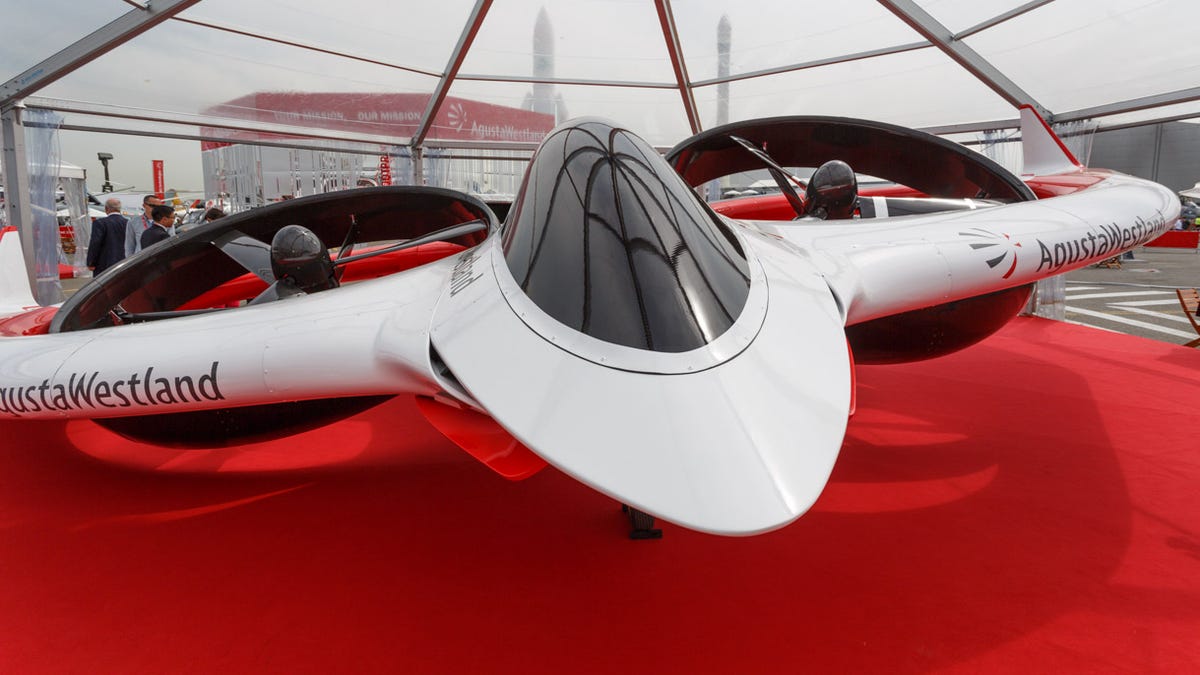Project Zero tiltrotor shows off battery-powered flight
At the Paris Air Show, AgustaWestland shows off an exotic single-person aircraft designed to investigate all-electric, no-hydraulic flight systems.

LE BOURGET, France -- Sure, there are electric vehicles on the road now. But aviation company AgustaWestland thinks they may have a place in the air, too.
At the Paris Air Show here, the Finmeccanica subsidiary showed off an exotic tiltrotor aircraft called Project Zero that's powered by lithium batteries. It flies, but project manager Jianye Zhang wouldn't say how far or how fast.
The single-passenger aircraft looks like a flying wing, but it's got two propellers built into the surface of the wing. For takeoff, the propellers push air downward to thrust the aircraft up like a helicopter; to fly, the propellers rotate toward a vertical orientation to thrust the aircraft forward.
"For us, this is a demonstration -- an incubator," Zhang said.
There are three technology goals AgustaWestland wanted to accomplish with the design: an all-electric motor, a very precise propeller blade control that adjusts each blade's pitch 18 times a second, and a complete absence of the hydraulic systems commonly found in helicopters.
Hydraulics are a maintenance hassle and must be checked for leaks before every flight, so the company wanted to see what could be done without them.
Project Zero is very light, Zhang said, through use of a lot of carbon fiber and other weight-saving materials. He wouldn't say precisely how much the aircraft weighed, but said it was more than 500 kilograms.

